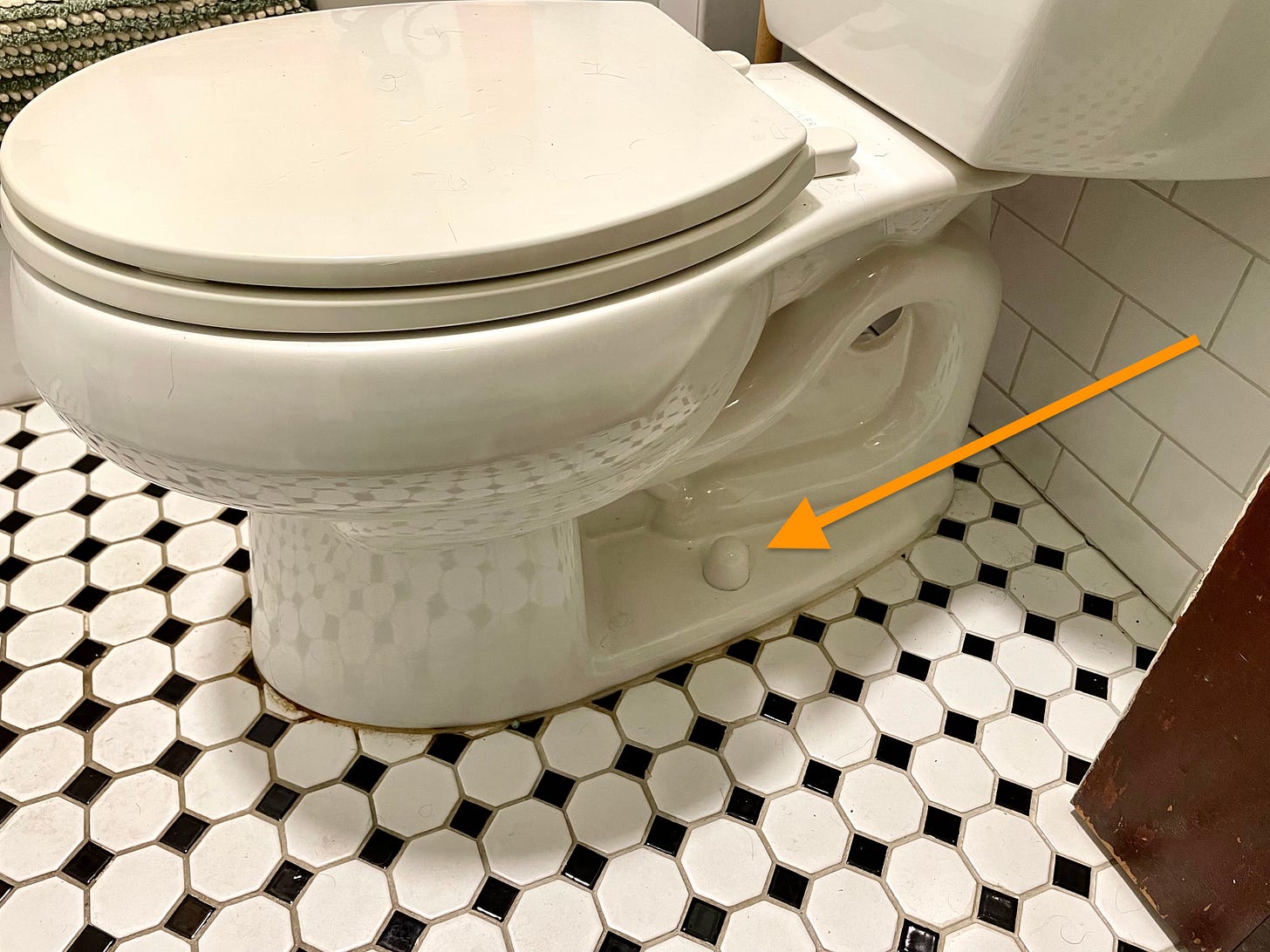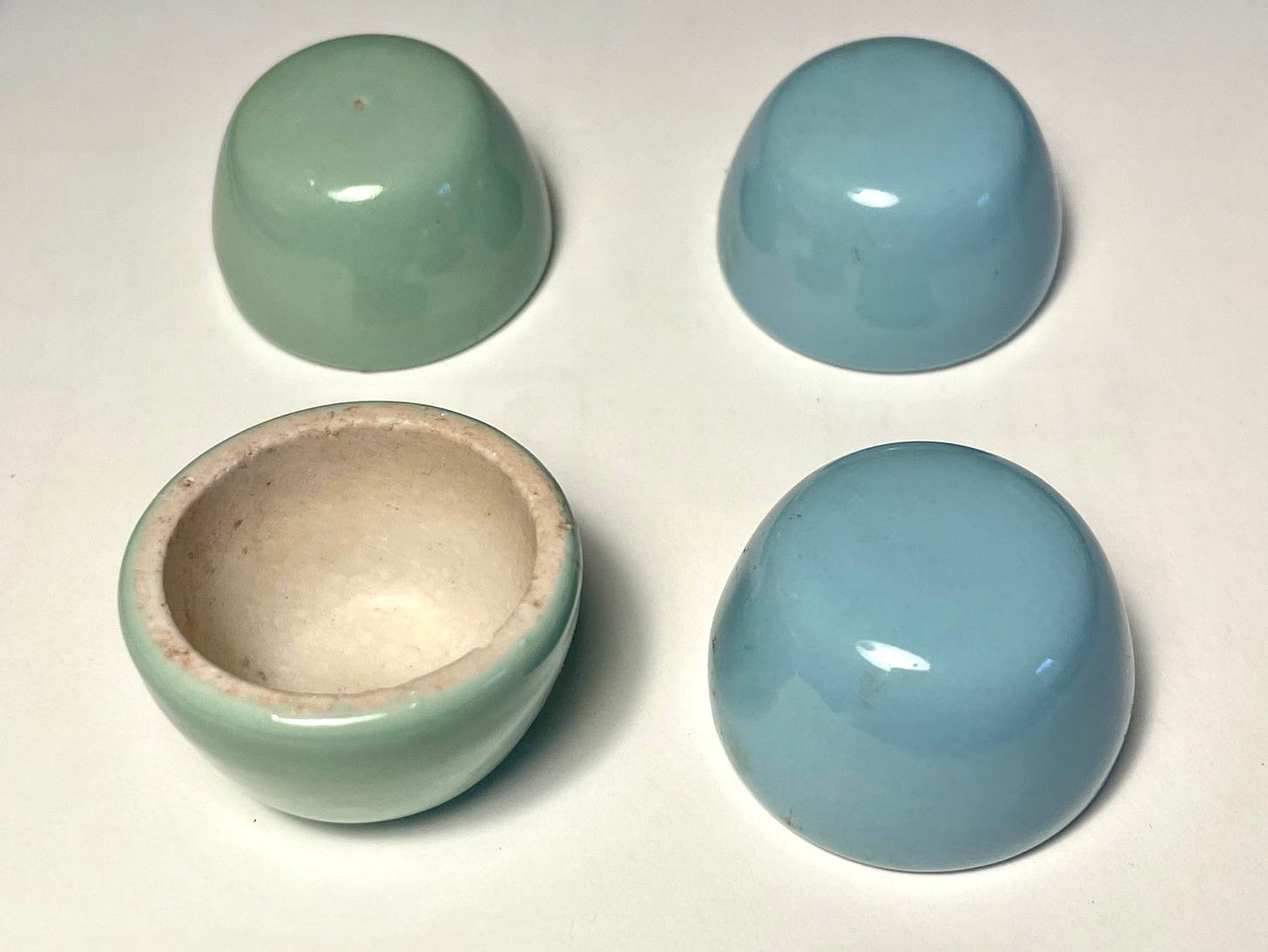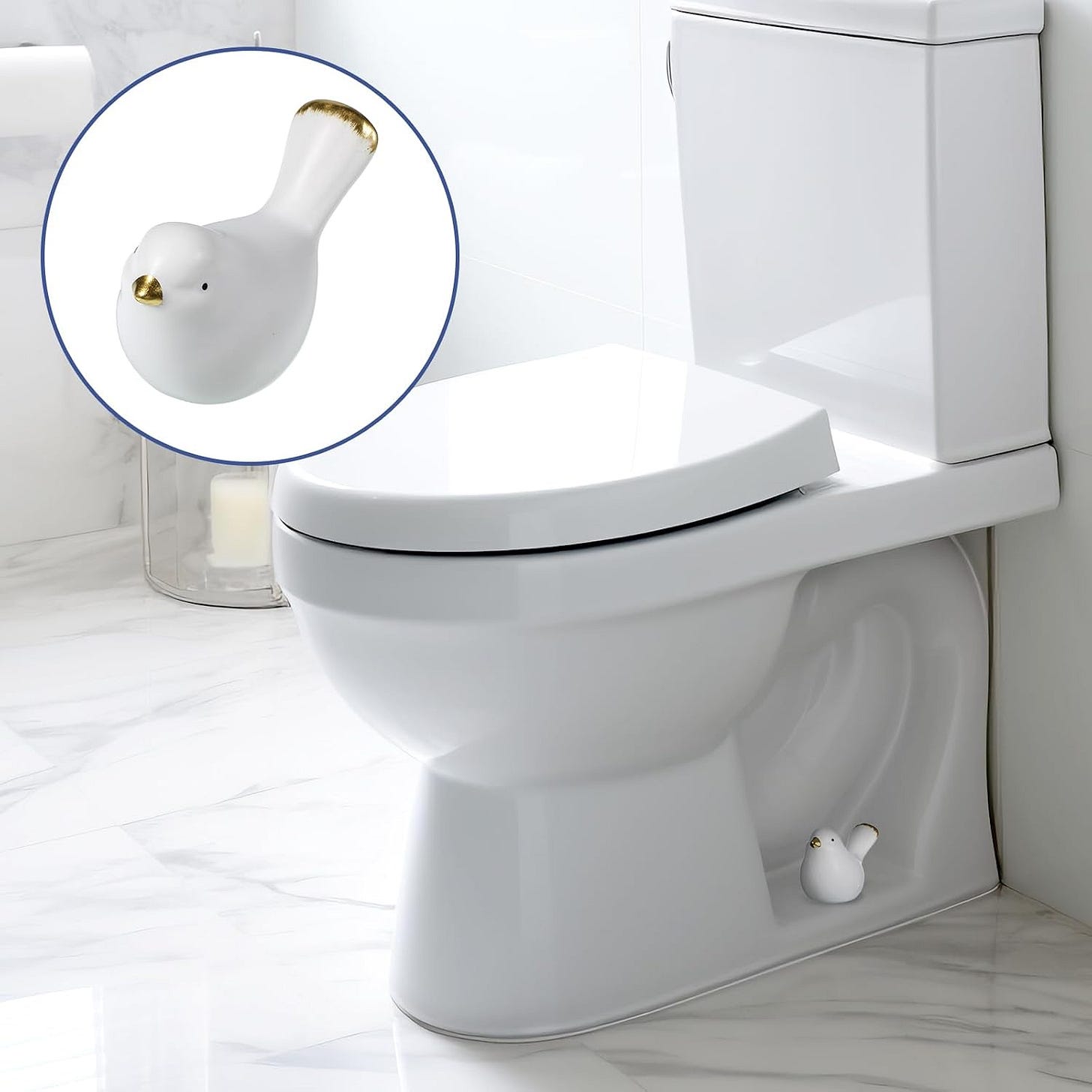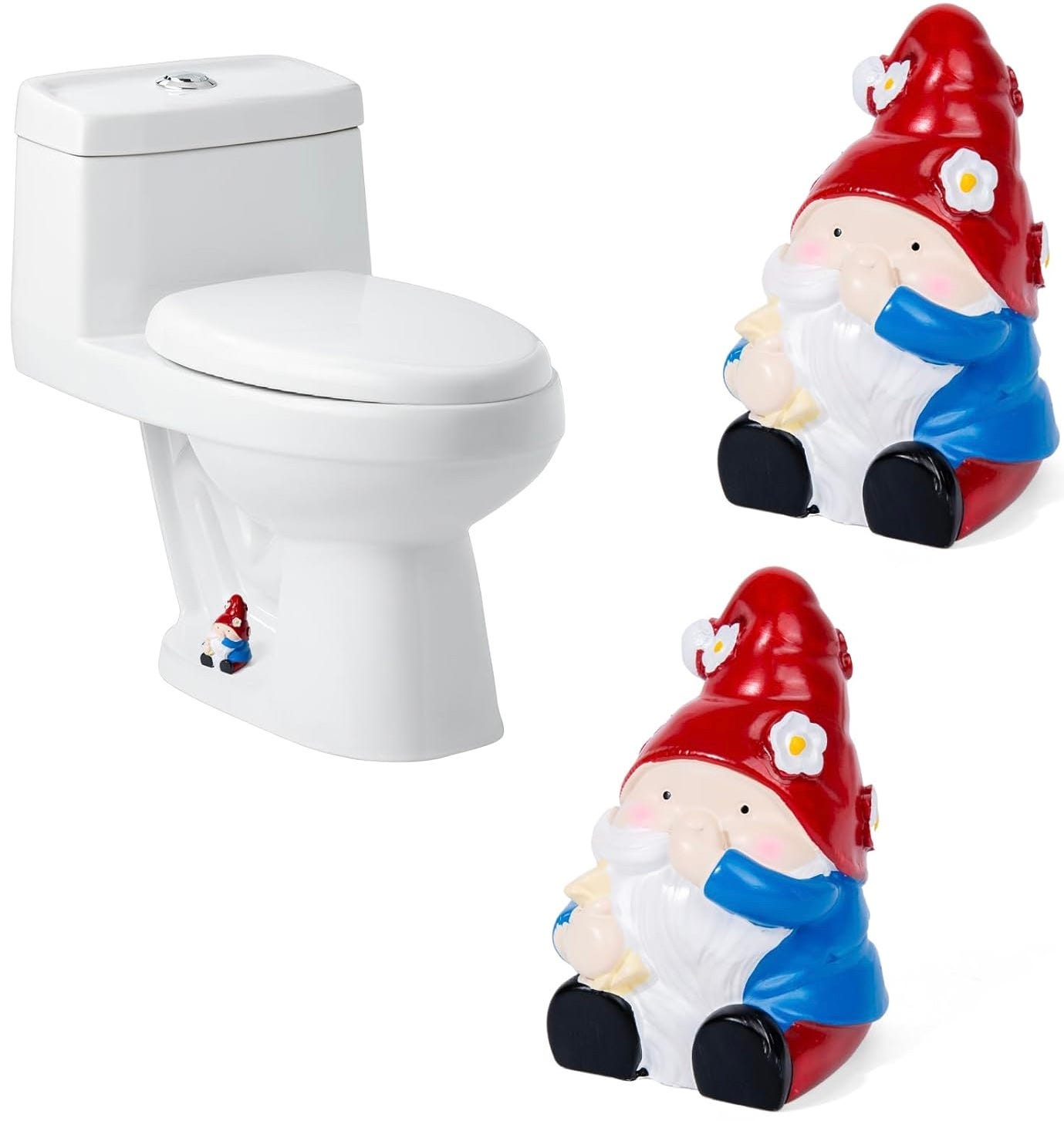The Most Inconspicuous Part of Your Bathroom
A deep dive on a small accessory you probably haven’t thought much about. Plus more recursive imagery and a new Inconspicuous News Roundup!
It all started a few weeks ago, when I wrote that article about decorator colors. Toward the end of that piece, almost as an afterthought, I mentioned that I used to have a vintage display of ceramic underglaze colors. I sold it back in 2018, but I still had this photo of it:
That photo — and, specifically, the shape of the color samples — resonated with reader Kurt Rozek. He sent me a note that said, “I’m not sure if there’s a use for those doohickeys, but I swear they’re like the cap you put over the bolt that attaches the toilet bowl to the floor.”
Kurt was referring, of course, to those little nubs on each side of the base of most toilets. They serve two purposes: to protect the bolt from corrosion, and to serve as an aesthetic fig leaf that covers up the exposed hardware. And sure enough, just like Kurt said, the bolt caps on my own bathroom toilet (and on yours too, I bet) really do look a lot like the underglaze color samples:
Toilet bolt caps are such a classically inconspicuous topic that I’m surprised I’ve never written about them until now. It’s not clear exactly when they were invented, but the first patent for them appears to have been granted in 1951, to an inventor named George Summers. In his patent application, he stated, “My invention … consists of a cap for bolts, nuts and the like, an object of which is to provide a plastic cover for the unsightly exposed ends of such hardware.” A few paragraphs later, he added, “A further object of this invention is to provide such a cap formed of a color to match bathroom or other fittings.”
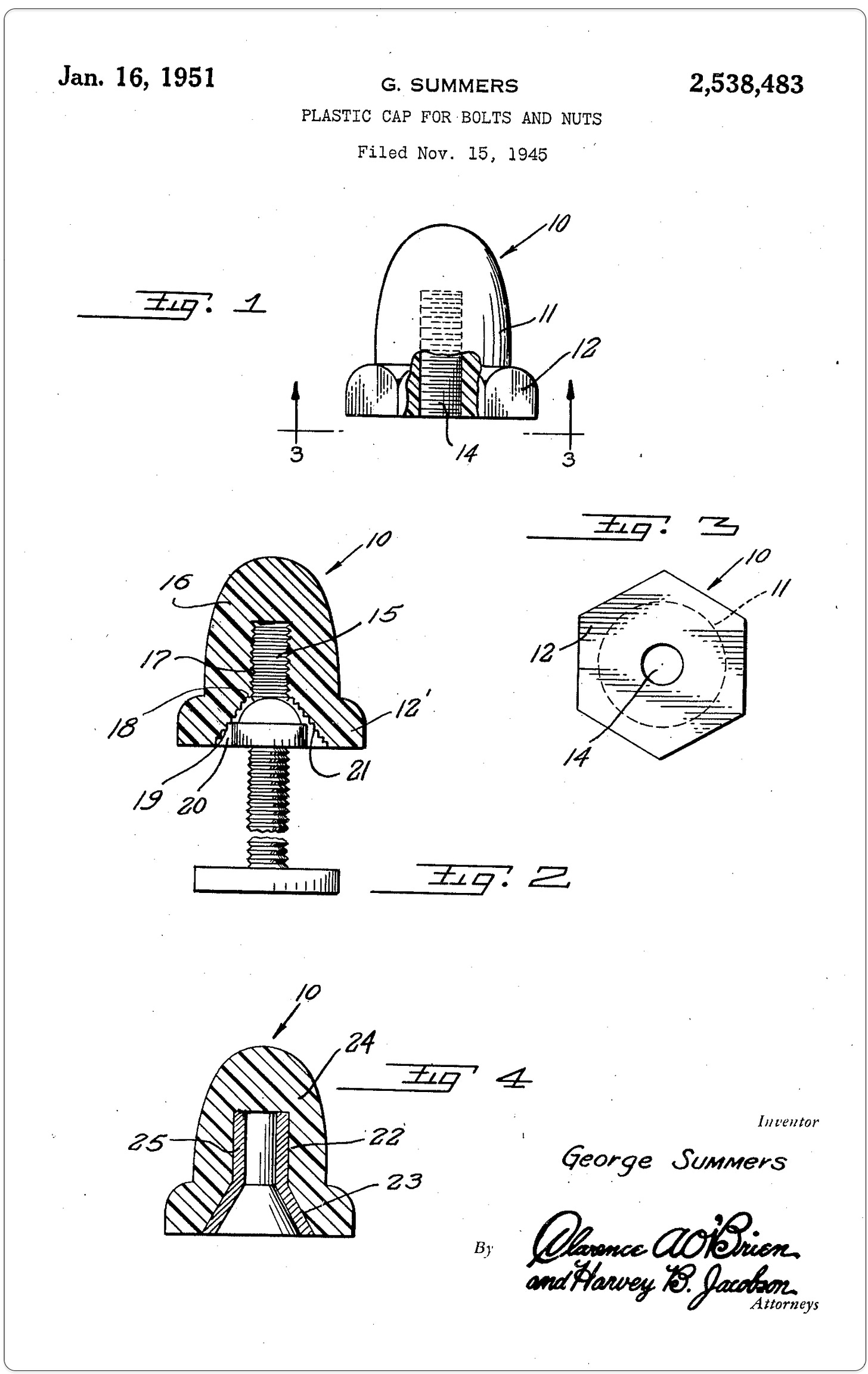
Although Summers’s patent application refers to a “plastic cover,” early bolt caps were often porcelain, just like the underglaze color samples. In fact, you can still find porcelain caps being sold by vintage dealers.
Since that initial patent, there are have been several innovations in toilet bolt caps. The first is the shift from porcelain to plastic, which is now the most common material. Second: Although Summers’s patent drawings showed the caps screwing onto the bolt, for many decades most caps either snapped on or were simply placed over the bolt and thus could easily be dislodged by pets and toddlers. So in 2013, a Pennsylvania couple named Gary and Ruth Frazer created “twister caps,” which are produced with internal thread patterns so they can be screwed onto the bolts.
But the biggest change in bolt caps — one that I knew nothing about until I started working on this article — is the advent of figural or novelty cap designs. Here are two typical examples:
It’s not clear, at least to me, when these novelty caps began appearing, but they turn the entire ethos of this product category on its head. The whole point of bolt caps had been for them to blend in and essentially become invisible (or at least inconspicuous). But these novelty designs are intended to attract attention — a counterintuitive approach for a floor-level bathroom detail.
I soon learned that there are many dozens of these designs available just on Amazon (and probably even more at other retail outlets). They break down into several major sub-categories, so I’ve created a series of photo galleries for you to peruse. For each gallery, you can click on a thumbnail photo to see full-size images:




